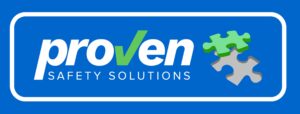In Australia, due diligence requirements for safety vary depending on the industry and the specific regulations that govern it. However, there are some general principles and frameworks that apply across many sectors. These are typically designed to ensure that employers take all reasonable steps to protect the health and safety of their workers, as well as other people who may be affected by their work activities.
Let’s explore some of the key aspects of due diligence requirements for safety in Australia.
1. Work Health and Safety Legislation
- Australia has adopted a harmonized approach to work health and safety (WHS) laws, with most states and territories implementing the Work Health and Safety Act 2011 (WHS Act) and associated regulations. These laws set out the obligations of employers, workers, and other parties to ensure health and safety in the workplace.
- Under the WHS Act, employers have a duty of care to ensure, so far as is reasonably practicable, the health and safety of their workers and others who may be affected by their work activities. This duty includes the requirement to exercise due diligence to prevent harm.
- There are laws that relate to industries such as food safety, clinical care, maritime safety, aviation safety and road and rail safety. Executives need to understand the requirements in each industry or sector before they make key decisions on behalf of their organisation.
2. Roles and Responsibilities
- Due diligence requirements typically involve the active participation of company officers, including directors, board members, and senior executives. These individuals have a duty to exercise due diligence to ensure that the organization complies with its WHS obligations.
- The concept of due diligence extends beyond mere compliance with legal requirements and encompasses taking proactive steps to identify and manage risks to health and safety.
3. Risk Management
- One of the key aspects of due diligence is the implementation of effective risk management processes. This involves identifying hazards, assessing risks, and implementing controls to eliminate or minimise those risks.
- Employers are expected to regularly review and update their risk assessments to ensure that they remain relevant and effective in addressing changing workplace conditions.
4. Consultation and Communication
- Due diligence requires effective consultation and communication with workers and their representatives regarding health and safety matters. This includes providing information about hazards and risks, consulting on the development of safety procedures, and involving workers in decision-making processes that affect their health and safety.
- Employers must also ensure that workers receive adequate training and instruction on how to perform their work safely.
5. Monitoring and Review
- Employers are expected to monitor the effectiveness of their health and safety management systems and take corrective action where necessary. This may involve conducting regular inspections, the appointment of an independent auditor, investigating incidents and near misses, and reviewing performance data to identify trends or areas for improvement.
- Continuous improvement is a key principle of due diligence, and employers should actively seek feedback from workers and other stakeholders to identify opportunities to enhance safety performance.
6. Documentation and Record-Keeping
- Due diligence requires employers to maintain accurate records of their health and safety activities, including risk assessments, safety inspections, incident investigations, training records, and consultation processes. These records serve as evidence of compliance with legal obligations and can also help to identify areas for improvement.
7. Proactive Safety Culture
- Beyond meeting legal requirements, due diligence involves fostering a culture of safety within the organization. This includes promoting awareness of health and safety issues, encouraging reporting of hazards and incidents, and recognizing and rewarding positive safety behaviours.
- Effective leadership and commitment to safety from senior management are essential for building a strong safety culture and ensuring that safety remains a priority throughout the organization.
In summary, due diligence requirements for safety in Australia encompass a range of measures aimed at preventing harm in the workplace. Employers are expected to take proactive steps to identify and manage risks, consult with workers, monitor safety performance, and continuously improve their safety management systems.
By fulfilling these obligations, organizations can create safer and healthier workplaces for their employees and contribute to the overall well-being of their communities.
To download our free Officers Due Diligence checklist Click Here! If you have any specific aspects, you’d like more information on or if you have further questions, reach out by Clicking Here!



